In the morning, I had the unique experience of throwing away my tent. Usually, we have to stuff the car camping tent into our car for the duration of the backpacking trip. And the tent is usually damp, so we don’t put it back in its case. Instead, we let it spread out inside the car and hope that it gets dry while we are gone. This time, we had to decide which parts, if any, would be salvaged from the disintegrating tent (one tent pole, and the footprint – plus the stakes which didn’t belong to that tent anyway).
We used a campsite dumpster to say goodbye to our REI Kingdom 4. It was a good tent, but even before its dissolution we had been planning on replacing it. The interior was a bit too roomy for us, especially if we wanted to start pressing our way into the shoulder seasons.
After we took care of the tent, there wasn’t much else to do. Around 10 am, it was time to drive to the beach and start walking. We wouldn’t be able to hike past Hole in the Wall until after lunch, but we both agreed that waiting on the beach would be preferable to waiting anywhere else.
The last thing I did at the car was to take a moment to take a picture of my business card. That way if I encountered any people who might be interested in my books or blog, I could just show them that photo and they could take their own picture of it. I didn’t want to take any physical cards, because they could get wet and I didn’t know how many (if any) I’d need.
Ambrose drove us the mile and a half or so to the backpacker’s parking lot, and we left our car behind. My pack was inordinately heavy, but I had a light heart. The pack would get lighter every day as we ate food. In the past, my pack would only get lighter every other day from food, but this time we were each carrying our own breakfasts. So even on days when we ate lunch and dinner from Ambrose’s stock, I’d be losing weight from my own breakfast.
We made our way from the parking lot to the trailhead with its non-flush toilets. I took a picture of the tide chart. We had a paper copy of the tide chart from the WIC, but I like redundancy when it comes to information like that. Just like we had the GPS, but I also had topographic maps to help keep us on track.
At Rialto Beach, there is a backpacking parking lot, farther from the trailhead and made of gravel, then the visitor parking lot, paved and abutting the trailhead. The start of the trail is on these odd sidewalks laid over the beach’s rocks with holes in them that like to eat trekking pole tips. Ambrose and I both kept ours elevated as we walked along that part. And then there’s a turn, and the laid on surface gives over to water worn rocks. We step around some driftwood logs piled higher than our heads, and then the ocean is there.
We knew it was there, of course, the sound of its ebb and flow inescapable from the moment we stepped out of the car. But seeing it gives me something else. Reinforces the solid reality of my presence on the ocean, this isn’t some white noise being piped through, no. I’m really here, and I could run into the surf if I wanted to. I don’t, at this point, because I don’t want to get my boots wet so early in the hike. But I could!
Ambrose and I began to hike along Rialto Beach without much company. The morning was overcast and cool, so only a few brave and hardy souls were day hiking. There were pelicans this time, lots and lots of them, congregating at Ellen Creek.
My shoulders started aching just about immediately, but I expected that and was prepared to endure. My legs felt pretty good, and my feet felt great. I had been a bit concerned that my Softstar Switchback boots might be too thin for all the rocks I was going to be walking on, but they started out just fine, offering protection while still letting my feet feel the rocks beneath them.
We made it to Hole in the Wall well before the tide would allow us to cross it. Now, we did have an option. We could have kept going, if we took the overland trail around Hole in the Wall. If time had been of the essence, then we would have. But we had all the time in the world today. We only had a couple of miles to go after passing Hole, and it would be passable not long after lunch. We settled on some driftwood piles to wait.
And to eat our burritos.
That’s the nice thing about first day lunch. It doesn’t really need to fit into your bear canister, because you’re going to eat it!
There was a threesome of hikers that was also waiting near us, and we watched two people do the overland trail. The overland was quite steep, and neither Ambrose nor I wanted to climb it with 10 days worth of food on our backs.
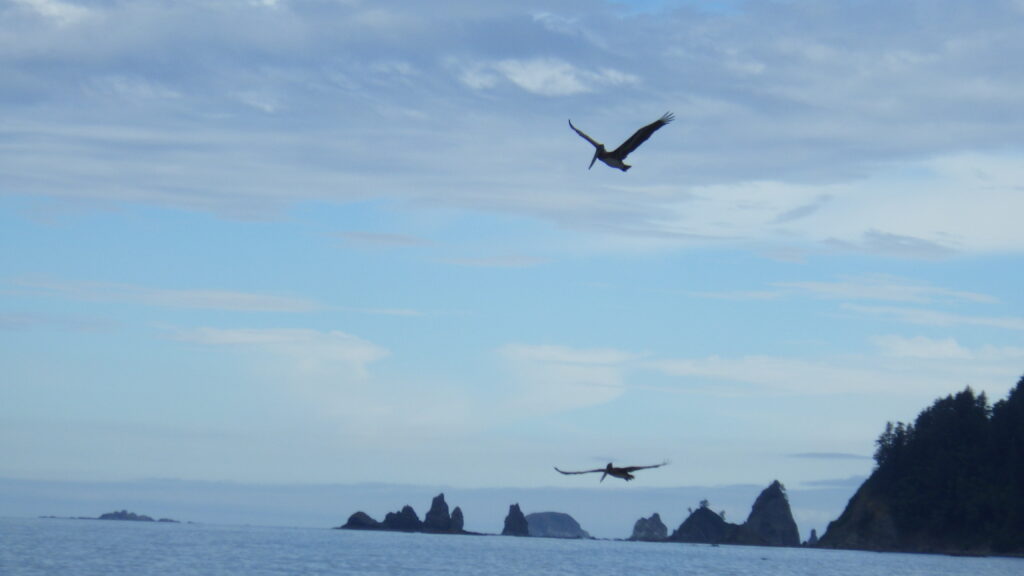
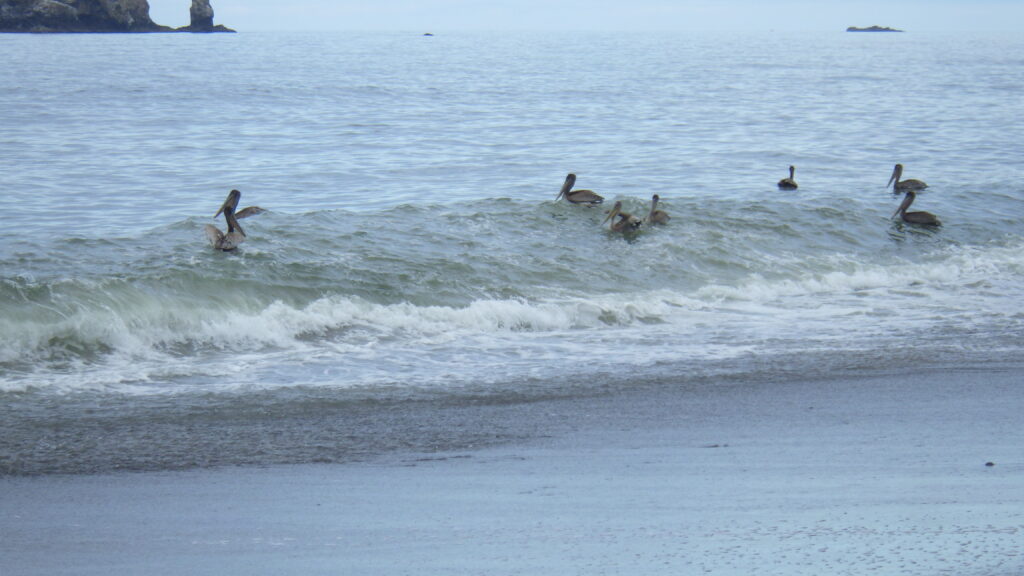
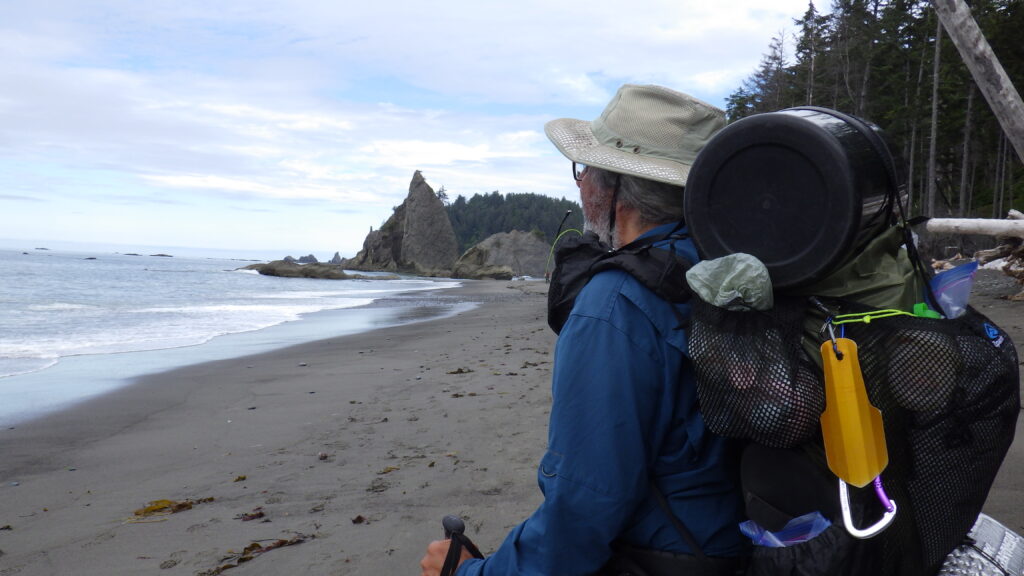
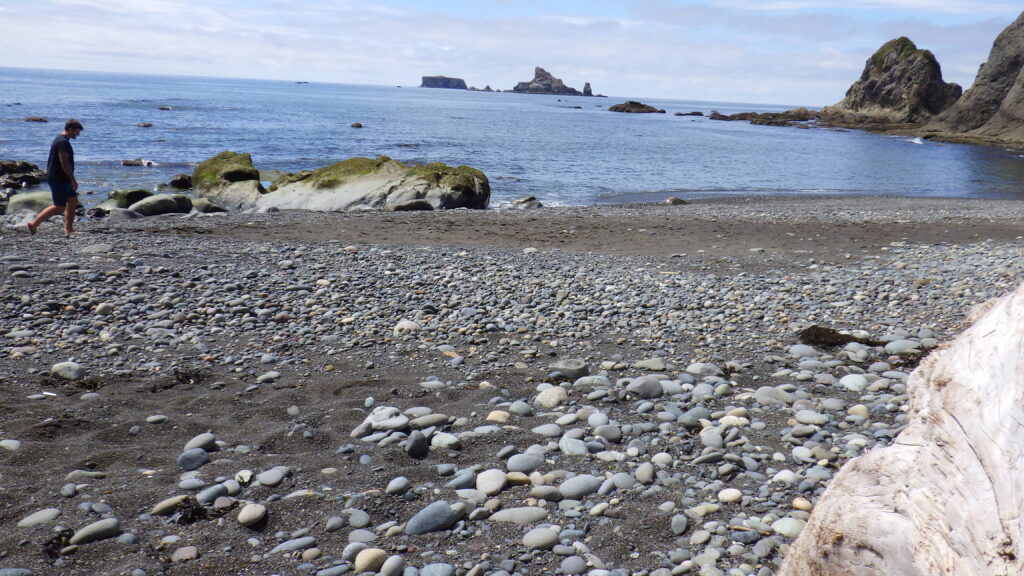
The sun came out, making the water sparkle, and bringing out the crowds. Not as crowded as I’ve ever seen it, but there was very little way to take a picture without getting someone else in it. A few people had made the journey through Hole in the Wall before Ambrose and I decided to go. Those folks were daring, scrambling on the high rocks to get by; we wanted to stay at a level, so we waited until we saw a path that looked viable and then set out.
The crowds thinned after Hole. Once we started making the hike around the point to Chilean Memorial, they disappeared. Which is a good thing, because that’s the way I like to hike best. Maybe it’s because I started hiking in Idaho on little used trails, but solitude in hiking appeals to me. I feel freer when there’s no one around but me and my hiking partner (or no one, since I do enjoy solo hiking).
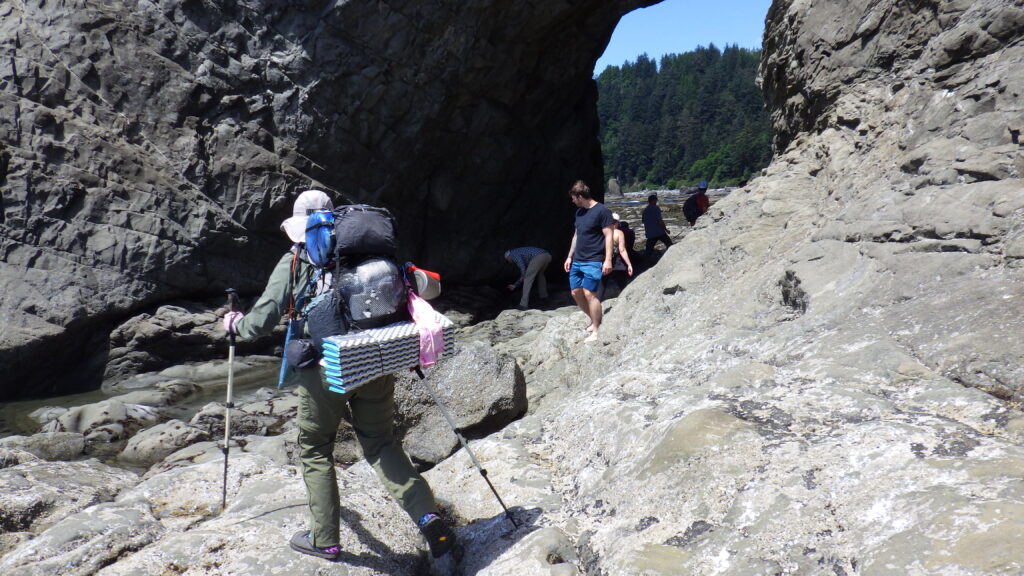
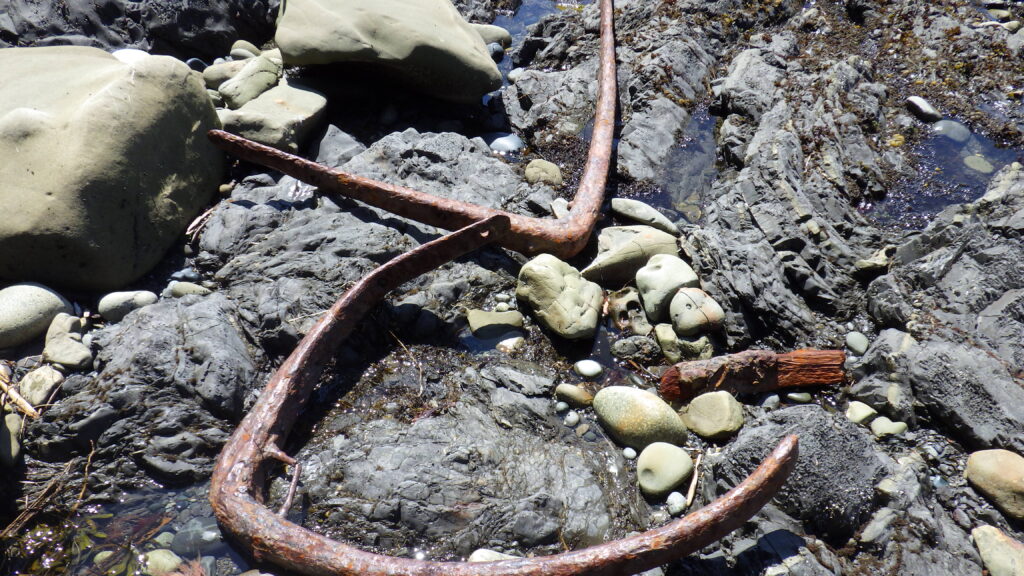
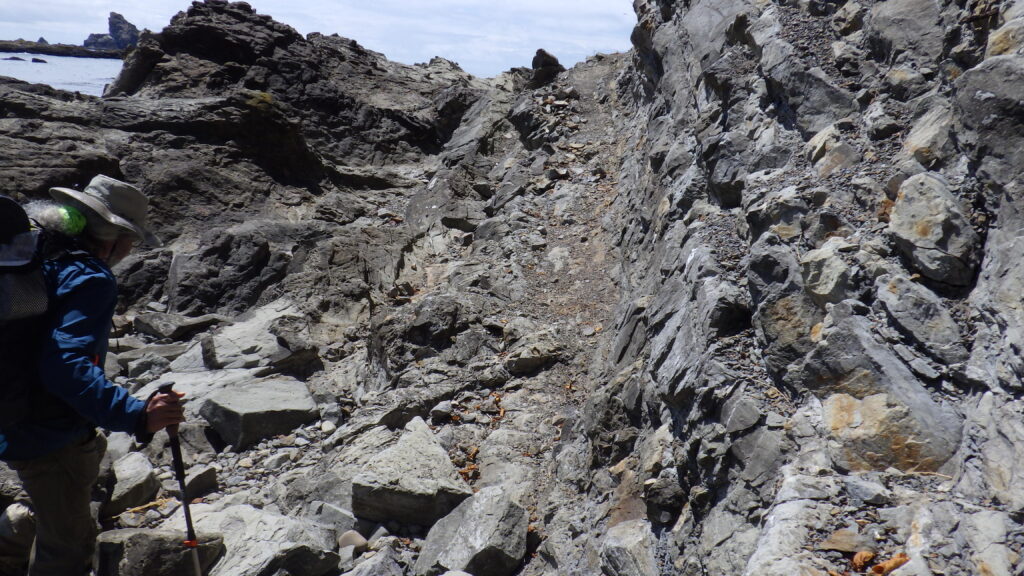
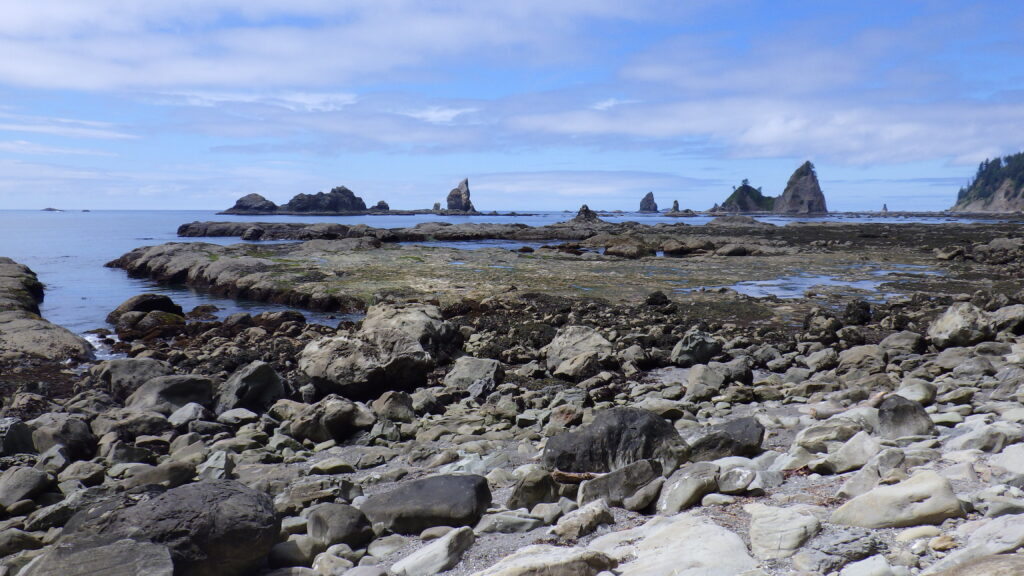
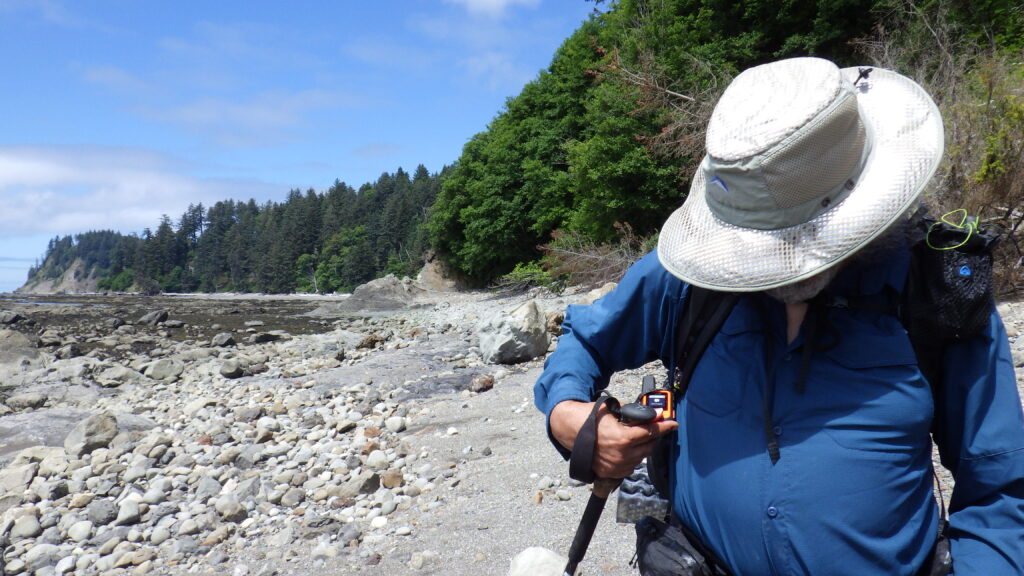
At some point during the hike to Chilean, after we had rounded the initial point and were well out of sight of Rialto, I had to pee. In order to do that, I needed to take off my pack. My dangerously overloaded pack. It was easy enough to dump it on the ground, but when I went to pick it back up, I had a misfire. The straps were tangled. So I dumped it on the ground again to have another go.
That’s when I heard a snapping sound and realized with dawning horror that my pack’s back mesh panel, an integral part of the comfort system for this pack, was no longer connected to the top of the pack. The little plastic connectors had snapped right off under the pressure I’d put on the pack. On day freaking zero!
The pack failure distracted me so much that I didn’t take video of the whale bones that were stacked up on a nearby log. I did get a picture though.
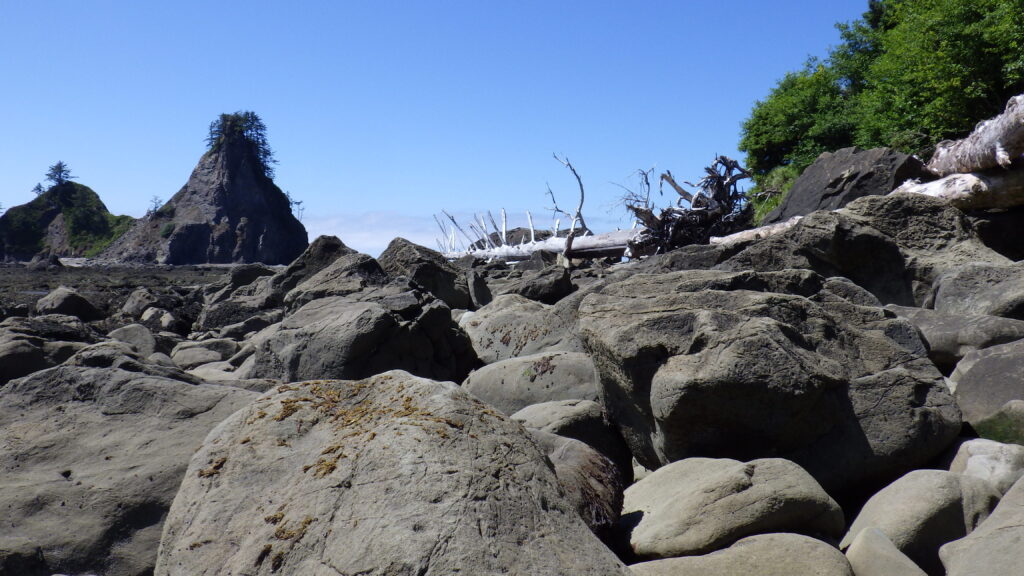
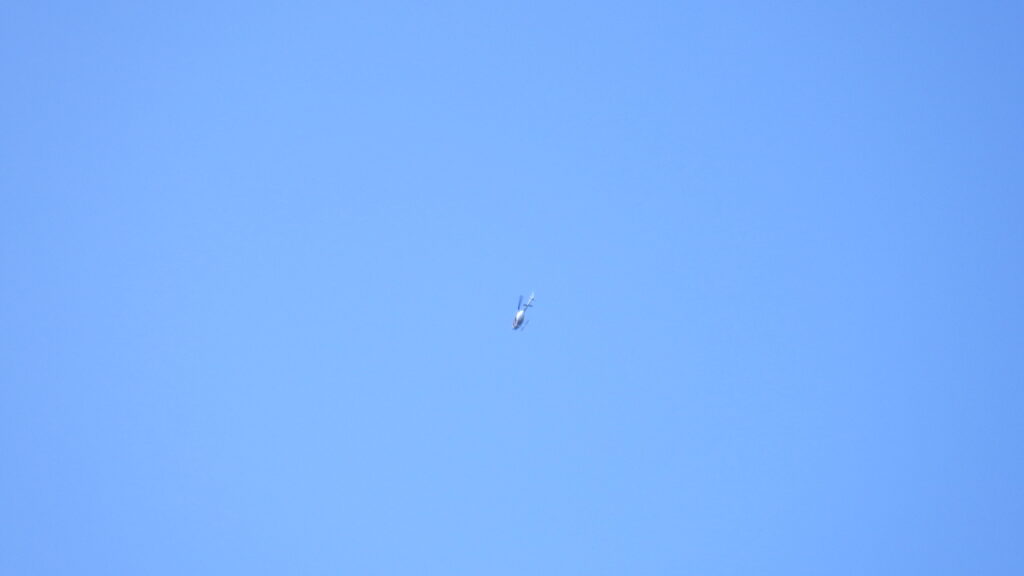
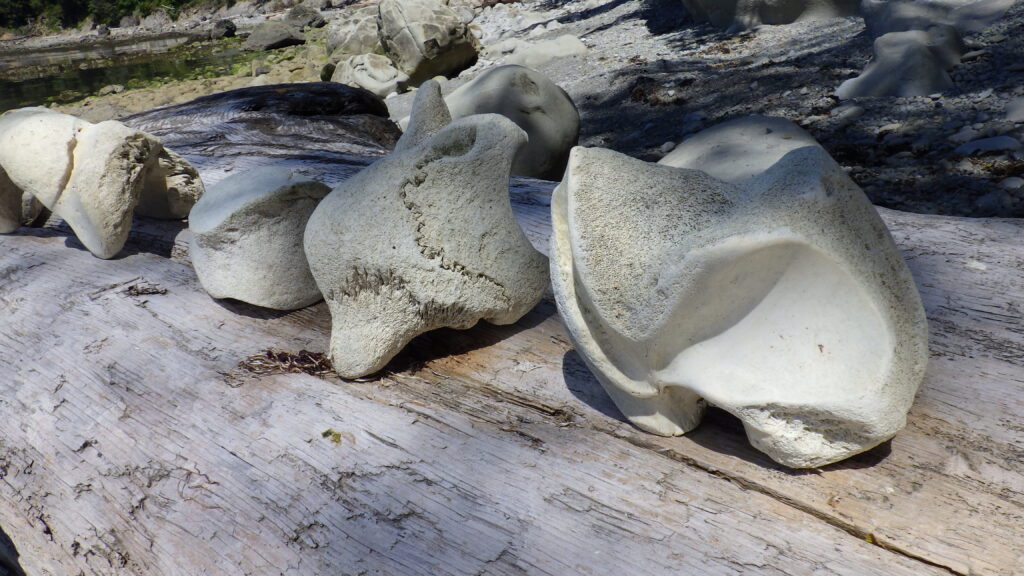
Lucky for me, we didn’t have much longer to hike before we stopped for the day. Unlucky for me, we still had to hike a bit. I got to experience how my pack would work without a mesh back panel, and the answer to that is: poorly. I mean, it functioned as a backpack, but it tore up my shoulder muscles way more than when the panel was intact. I had to fix it. There’s no way I would be able to hike 10 days without the support of the mesh panel.
As I hiked, picking my way through the varied terrain of rocks and seaweed, my brain began spinning up solutions. What did I have that could function as a replacement for those little plastic connectors? Nothing. Therefore, what could be done? I had sufficient cordage to tie the panel to the loop the connector had been hooked to, but I wasn’t sure how to secure the cordage to the panel’s tie.
Ambrose declared we had reached Chilean, and told me to start looking for a campsite. I looked around. This didn’t look like Chilean to me. No tree leading to the pit toilet. No water. The surface was big rocks instead of rough sand. And, ahead, the rocks we’d need to traverse to actually reach Chilean. I tried not to sound like I was correcting him, but I totally was when I asked if perhaps we had to go past those rocks to get to Chilean…
I looked for the overland trail that bypasses those rocks, but I didn’t see the entrance so we just traversed the rocks. It’s a short section, but it can be annoying when the water is higher. Lower down, it’s just rocks, but higher up there’s a lot of driftwood mixed in. The driftwood is a lot more slippery when wet, and gets a bit more complicated than the rocks on this point.
After we got across the rocks, it was just a matter of picking a campsite that wasn’t already occupied. We staked out a small section defined by driftwood. Not the best site, but we weren’t being picky.
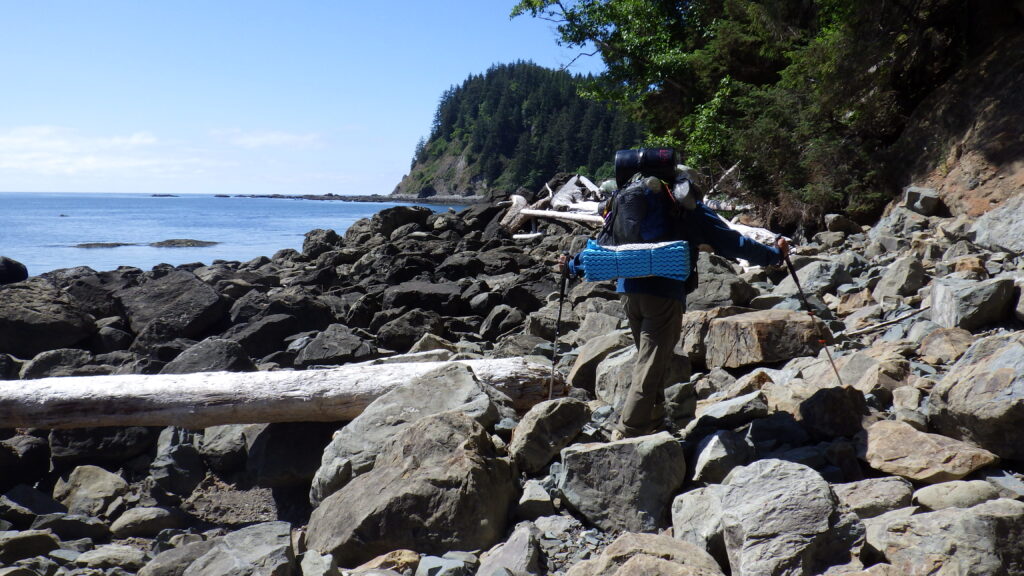
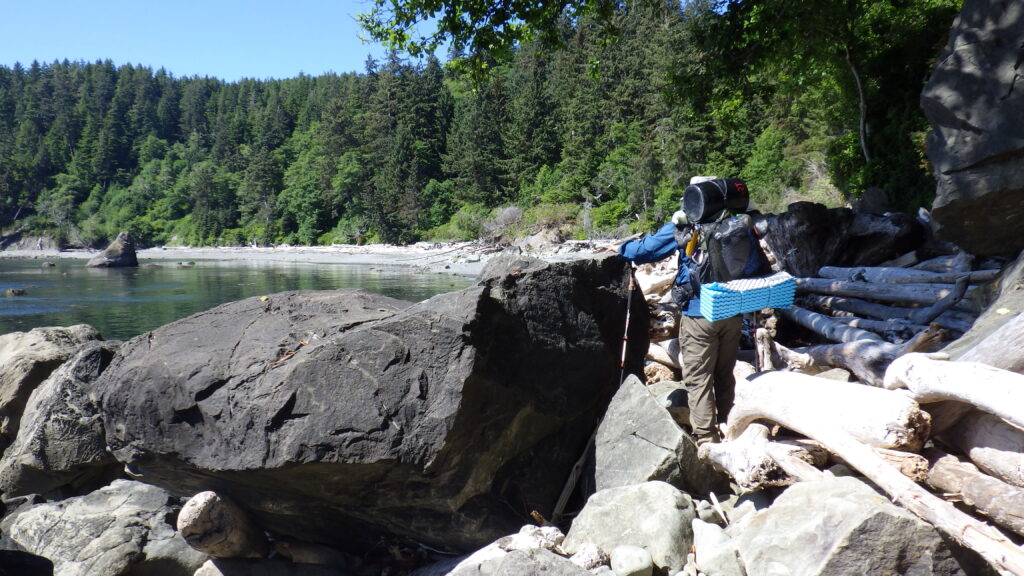
Ambrose went to get water while I set up the tent. Camp chores come first! But once camp chores were done, we settled down to watch the ocean. Well, I was also working on fixing my pack, now that I was able to empty it into the tent. Ambrose had given me a knot to create a loop on the mesh panel strap. That loop would then be joined to the connector’s loop via another tie. I got my cordage out and went to work on the knots.
The first loop creation didn’t quite work out, but we worked together to refine it a bit until it held up under tension. Then I tied that loop to the one attached to the pack frame. Ta da!
There’s no joy quite like fixing gear in the field. Over the years, I’ve learned that there is very little that can’t be fixed in the field if you put your mind to it and carry multi-purpose tools for fixing (like duct tape, dyneema tape, and cordage).
With the pack ready for the next morning, I settled in, ready for the serious business of enjoying the ocean and watching the sun traverse the sky until it disappeared behind the point to the north. Ambrose cooked us dinner at dinner time, and I discovered that all those empty food packets he’d left in my food weren’t trash, they were supposed to be koozies. But I had kept one, and I didn’t need more than one koozie.
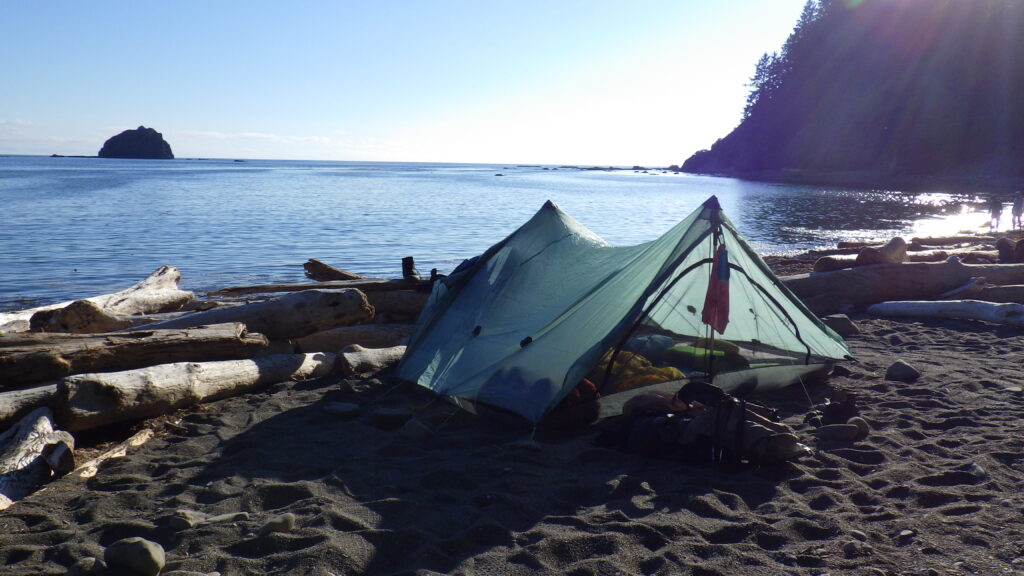
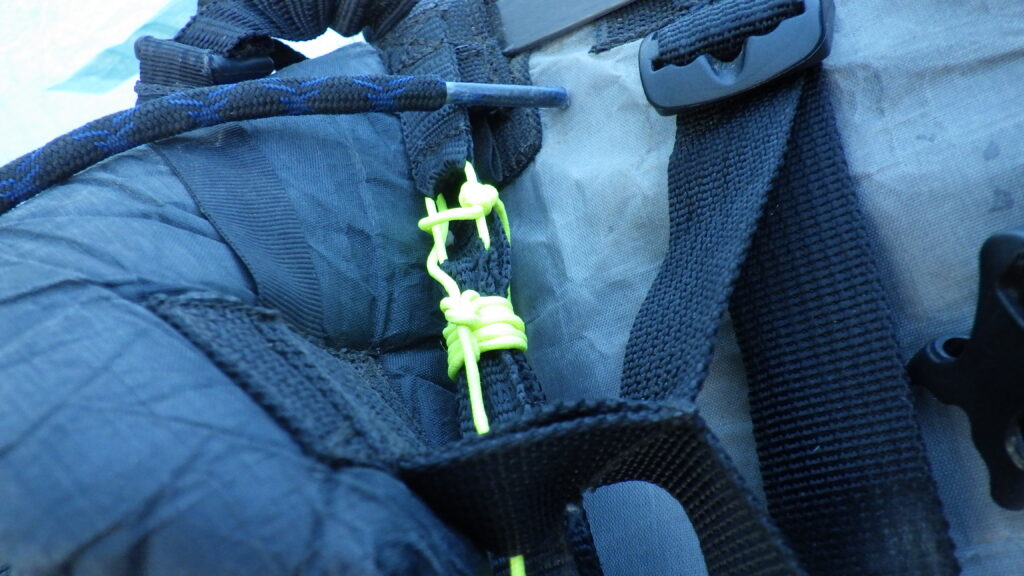
For this trip, we were carrying closed cell foam sleeping pads instead of our normal inflatable pads. The reasoning behind this is that the foam would provide adequate comfort on sand, and it can’t be punctured. Well, the sand at Chilean was not the most comfortable sand for those pads, and my hips didn’t like it when I tried to get ready for sleep. This sand was coarse, resisting my efforts to change its shape to accommodate mine. Ambrose said I just needed to use my body weight to settle into it, but I didn’t feel like I could shift the rocks under me at all.
Still, the sound of the ocean lulled me to sleep, cozy in my quilt and fleece.
Day Zero’s Video: